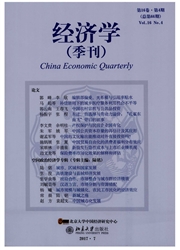

 中文摘要:
中文摘要:
基于生产集中度指标、生产规模指数、产地集中度系数、效率比较优势指数、规模比较优势指数以及综合比较优势指数对1993--2013年中国油菜生产空间布局演变的实证表明:1993年以来中国油菜主产省虽变化不大,但部分省份在主产省中的位次发生了变动,其中西南地区、华中地区油菜主产省的位次上升明显,西北地区、华东地区部分油菜主产省的位次则有不同程度的下滑;从区域分布来看,中国油菜生产空间布局总体呈现“东减、北移、西扩”的特征;油菜产地集中度系数的波动上升表明,中国油菜产地集中度正在走向更高的水平,产地越来越集中。进一步测算三大比较优势指数发现,大部分油菜主产省长期以来具有十分稳定的效率比较优势、规模比较优势和综合比较优势,长江流域、北方春油菜区等传统油菜生产区域始终具备稳定的比较优势。
 英文摘要:
英文摘要:
Based on the producing concentration index, production scale index, origin concentration coefficient, efficiency comparative advantage index, scale comparative advantage index and comprehensive comparative advantage index, the empirical analysis of the spatial distribution evolution of China's rapeseed production during the period of 1993-2013 shows that: The main rapeseed production provinces have changed little since 1993, but the ranking of some main provinces has changed, of which the ranking of main provinces in Southwest China and Central China move up significantly, but the ranking of main provinces in Northwest China and East China has declined with different degrees; in view of the regional distribution, the spatial evolution of China's rapeseed production presents the characters of"eastward subtraction, northward move and westward expansion"; the increasing of coefficient volatility of rapeseed origin concentration indicates that the origin concentration degree of China's rapeseed production is moving toward a higher level, and the origin becomes more and more concentrated; after a further measuring of three comparative advantage index, this paper finds that most of the main rapeseed production provinces have along-time stability in efficiency advantage, scale advantage, comprehensive comparative advantage, and the Yangtze River Valley, the northern spring rape districts as well as other traditional rapeseed production areas always have a stable comparative advantage.
 同期刊论文项目
同期刊论文项目
 同项目期刊论文
同项目期刊论文
 期刊信息
期刊信息
